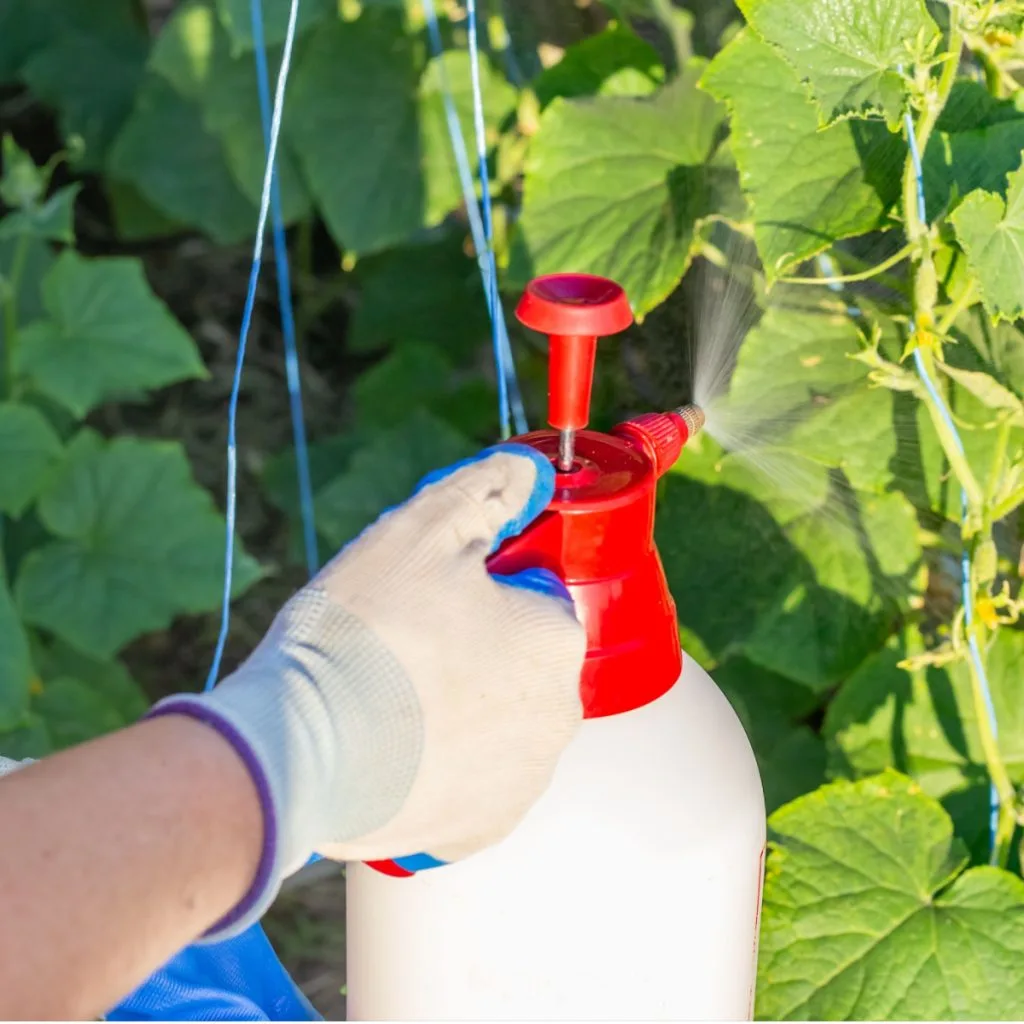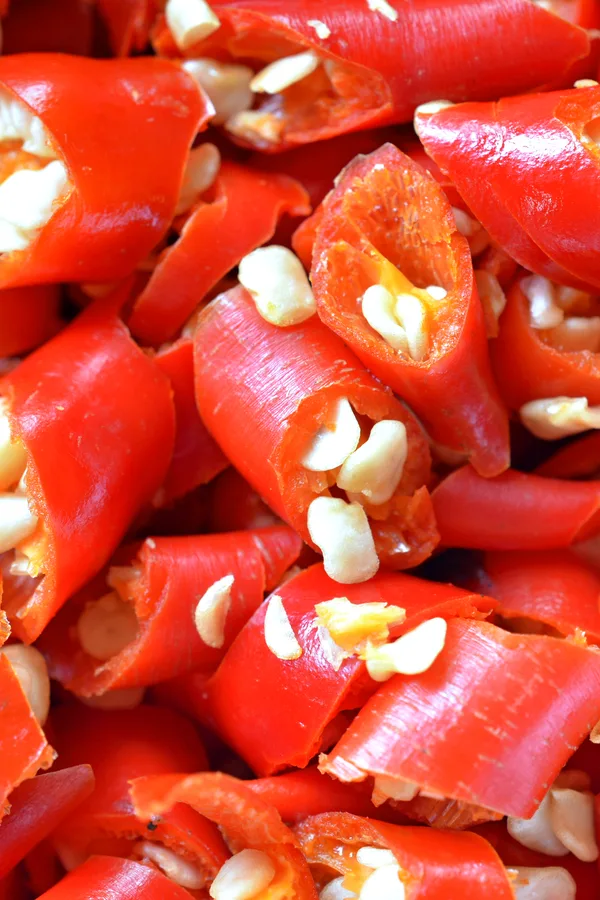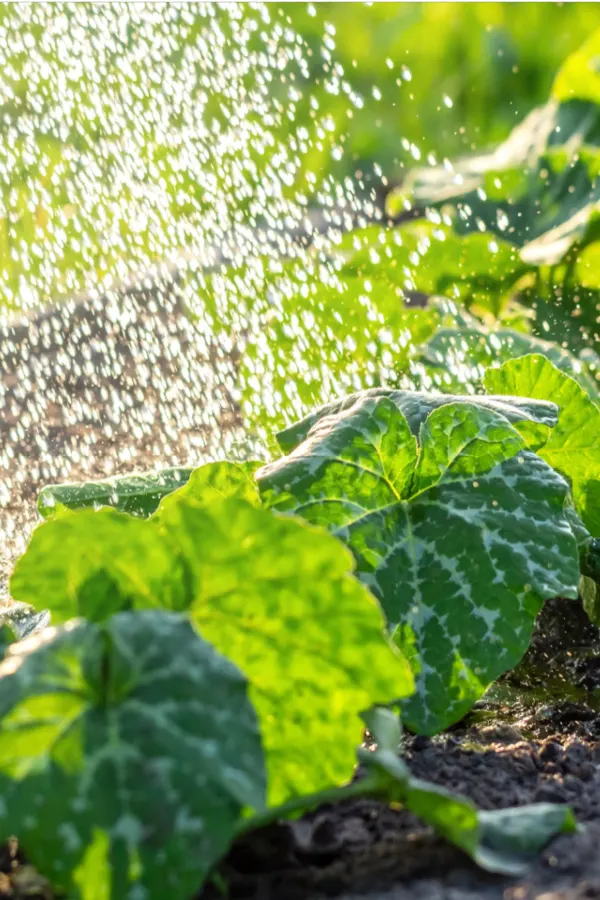Did you know that one of the best ways to protect your vegetable plants, flowers and flowering bushes from deer, rabbits and a long list of insects is to simply make and use your own homemade hot pepper spray?
As it turns out, hot pepper spray is one of the most effective organic solutions to keep insects and animals from damaging plants. Not only is it all natural, it can also be made quite easily from simple ingredients. And quite inexpensively too!
One thing is for sure, it is certainly a safer alternative than spraying chemical pesticides and repellents. Beyond the worry of using harsh products on plants that produce vegetables and fruit, commercial pesticides can also kill valuable pollinators like bees and butterflies. And that alone can leave you with less fruit and flowers.

But that is exactly where hot pepper spray can save the day! Not only is it safe for plants – it’s also safe for pets, pollinators and humans as well.
How To Make & Use Hot Pepper Spray
Hot pepper spray works as a natural deterrent by coating plants with a blistering and protective coating of heat. It is applied as a liquid spray to the foliage of plants in gardens and flowerbeds. Once the hot residue dries, it leaves behind a spicy hot layer of heat. One that pests simply don’t like in the least.
For most pests, hot pepper spray is a deterrent and not an insecticide. Deer, rabbits, chipmunks and even groundhogs all like to stay clear of the spicy taste. In fact, usually, with just a few nibbles of a plant that is coated in hot pepper spray – the animals will simply move on.
This is usually the case for most insects that are pests as well. The spray acts as a deterrent making the foliage far less consumable for them. However, there are a few insects that hot pepper spray will actually eliminate.
Two of the best examples of this are spider mites and cabbage worms. When applied to plants affected by these two pests, the heat in the pepper spray is more than enough to kill the pest. And in the process, keep your plants safe from damage!
The Recipe – How To Make An Effective Hot Pepper Spray!
So how do you go about making hot pepper spray? You can actually create a highly effective mix from either fresh hot peppers, dried hot peppers, or even hot pepper powder and flakes. And by simply adding in a bit of garlic to the spray, it makes the mix even stronger as a deterrent for pests.

The recipe below calls for hot cayenne peppers, but jalapeno, habanero or even ghost peppers can be used. The key is to use hot, spicy peppers. And speaking of that, whenever working with fresh or dried peppers, always be sure to protect your eyes and hands!
The capsaicin that creates the heat can leave your hands in some serious pain. And if it gets in your eyes it can be both painful and dangerous.
Here are the three main ingredients you will need to make hot pepper spray:
- 1 gallon of water
- 10 Cayenne peppers chopped finely (a food processor works great for this task)
- 6 cloves of garlic
If fresh peppers are not available, you can substitute with 5 tablespoons of hot pepper flakes or 2 tablespoons of powder. There are some high heat pepper powders on the market that are perfect for making homemade hot pepper spray instead of using fresh peppers.
When using garlic, crush or mince the cloves to allow it to absorb in the water better. The more finely it is crushed or chopped, the better. The easiest way is to just throw it in the food processor with the peppers.

Heating Up The Peppers – How To Make An Effective Hot Pepper Spray!
To make, start by heating up the peppers and garlic in a pan for about 5 minutes on low heat. This helps release the oils from the skins and seeds of the peppers. This is good to do even with hot pepper powder. Warm it up enough to not burn it – but release the oil and heat. This, in turn, helps to create a more potent spray.
Next, add in the water and stir. Allow the mixture to simmer for about 30 to 45 minutes. Again, heating the water with the peppers helps to infuse the heat into the liquid. It does not need to boil, but a low simmer is ideal for really getting the peppers and garlic to absorb into the water.
Take off of the heat and allow the mixture to sit for at least 24 hours. The heat will continue to seep into the water during this time. Anytime after 24 hours, you can then strain the liquid through a colander or cloth. The mix can be stored at air temperature in a sealed container and will stay good for up to a month without issue.
As a side note, you can also purchase ready to go hot pepper spray if making your own is not an option. Affiliate Link: Bonide Go Away! Deer & Rabbit Repellent, 32 oz. Ready-to-Use Spray, Hot Peppers Deter Animals from Lawn & Garden
How To Use Hot Pepper Spray In Gardens And Flowerbeds
Hot pepper spray can be applied to specific plants or small areas with a simple hand-held spray bottle. For larger applications (entire gardens / large trees & shrubs) you can spray with a large tank or backpack sprayer. Affiliate Product Link: VIVOSUN 50 oz. Hand Held Garden Pump Sprayer

As you place the mix into the sprayer, add a few drops of natural biodegradable dish soap or olive oil to the liquid before spraying. The oil will help the mixture adhere to the foliage in a more consistent manner.
The key to using hot pepper spray is to keep the plants consistently covered in the spicy coating. Unfortunately, when it rains or when you water, it will lose its effectiveness.
The best time to apply is early in the evening. This way, the foliage is dry and easily absorbs the spray. In addition, most insects like to come out to eat in the overnight hours, so spraying later is more effective for control.
If you cannot spray early in the evening, mid-morning after the dew has dried is the next best time. Avoid spraying in the heat of the day because the mixture and sun can burn plant foliage.
To apply, simply spray an even coat of the mixture over the foliage. Be sure to spray as much of the underside of plants as possible too. It is here where smaller pests love to hang out.
In addition, heavy dew each morning can dilute and wash off the coating as well after a few days. That means you will need to re-apply every three to four days to protect plants. And of course, after every time it rains or you water.
A Few Extra Notes – How To Make Hot Pepper Spray
Hot pepper spray will burn if you get it in your eyes or on your hands. Always spray with caution and when the wind is minimal. In addition, wear rubber gloves and eye protection when mixing and applying the solution.
When using on edible crops that are close to harvesting, always wash vegetables thoroughly with water to rinse off any of the hot pepper residue. If not, it can make for some hot produce!
Here is to protecting your flowers and vegetable plants this year with hot pepper spray – not only can it help keep insects away, but deer, rabbits, squirrels and more! For more on repelling pests, check out our article How To Use Diatomaceous Earth To Get Rid Of Pests On Plants – Naturally & Safely!
This Is My Garden
Follow Our Facebook Page For Great Gardening Tips And Advice! This Is My Garden Facebook Page
This Is My Garden is a garden website created by gardeners, for gardeners. Jim and Mary Competti have been writing gardening, DIY and recipe articles and books and speaking for over 15 years from their 46 acre Ohio farm. They publish three articles every week, 52 weeks a year. Sign up today to follow via email, or follow along!
